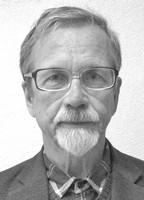Functional asymmetry in sport
Фотографии:
ˑ:
Teoriya i praktika fizicheskoy kultury №11 2017, pp.69-71
PhD, Associate Professor V.S. Sychev1
PhD, Associate Professor S.S. Davydova1
PhD, Professor V.A. Kashkarov1
1Lipetsk State Pedagogical P. Semenov-Tyan-Shansky University, Lipetsk
High sports achievement require that all components of the athletes’ body functional fitness should be taken into account. Functional asymmetry of the brain is one of the most important determinants of human capabilities in motor task solution. There is a considerable body of evidence to suggest the role of various asymmetries in sports activities, their peculiar dynamics in the process of training. However, a number of key issues of motor and sensory asymmetries remain unclear so far, and their resolution requires further research and discussion.
One such issue is to provide a precise definition of the leading motor skills and sensory mechanisms. The existing methods have yield mixed results. In different sports, different profiles of sensorimotor asymmetry are being discovered, but it is still not clear to what extent various peculiarities are the result of a purposeful process and to what extent they are a consequence of selection of appropriate indicators. Some characteristics of the functional asymmetry can be quite stable, being driven by a specific genotype, they are unaffected by the training process and can become an obstacle to the achievement of high sports results..
Keywords: functional asymmetry, determination of dominant asymmetry profile, sensorimotor asymmetries in sport, changes and selection.
References
- Berdichevskaya E.M. Profil mezhpolusharnoy asimmetrii i dvigatelnye kachestva [Profile of interhemispheric asymmetry and motor qualities]. Teoriya i praktika fiz. kultury, 1999, no. 9, pp. 43-46.
- Bragina N.N., Dobrokhotova T.A. Funktsionalnye asimmetrii cheloveka [Functional asymmetry]. Moscow: Meditsina publ., 1988, 288 p.
- Bushov Y.V., Nesmelova N.N. Individualnye osobennosti vospriyatiya chelovekom dlitelnosti intervalov vremeni [Individual characteristics of man’s perception of time interval duration]. 1994, vol. 20, no. 3, pp. 30-35.
- Gutnik B.N. Funktsionalnaya asimmetriya i vozmozhnye fiziologicheskie mekhanizmy ee aktivnogo otrazheniya v manualnoy deyatelnosti rastuschego organizma. Avtoref. diss. dokt. biol. nauk. [Functional asymmetry and possible physiological mechanisms of its active use in manual activity of a growing organism. Doct. diss. abstract (Biol.)]. Moscow, 1990, 45 p.
- Ermakov P N. Asimmetriya dvigatelnykh reaktsiy verkhnikh i nizhnikh konechnostey u cheloveka [Asymmetry of motor reactions of upper and lower extremities in humans]. Fiziologiya cheloveka [Human Physiology], 1986, vol. 12, no. 3, pp. 507-508.
- Efimova I.V., Simonov V.N., Budyka E.V. Profil lateralnoy organizatsii motornykh i sensornykh funktsiy studentov, zanimayuschikhsya boksom [Profile of lateral organization of motor and sensory functions of students practicing boxing]. Asymmetry, 2012, vol. 6, no. 4, pp.18-24.
- Leutin V.P., Nikolaeva E.I. Funktsionalnaya asimmetriya mozga [Functional asymmetry of the brain]. St. Petersburg, Rech publ., 2005, 368 p.
- Nikolaenko N.N., Afanasiev S.V., Mikheev M.M. Organizatsiya motornogo kontrolya i osobennosti funktsionalnoy asimmetrii mozga u bortsov [Organization of motor control and features of functional asymmetry of the brain in wrestlers]. Fiziologiya cheloveka [Human Physiology], 2001, vol. 27, no. 2, pp. 68-75.
- Solodkov A.S., Sologub E.B. Fiziologiya cheloveka [Human physiology]. Moscow: Sport, 2015, 620 p.
- Khomskaya E.D., Efimova I.V., Budyka E.V. Neyropsikhologiya individualnykh razlichiy [Neuropsychology of individual differences]. Moscow: RPA publ., 1997, 270 p.
- Chermit K.D. Dialektika simmetrii i asimmetrii v teorii sportivnoy trenirovki [Dialectics of symmetry and asymmetry in sports training theory]. Teoriya i praktika fiz. kultury, 1994. no. 8, pp. 29-32.
- Holtzen D.W. Handed and professional tennis. Int. J. Neurosic, no. 1-4, pp. 101-119.
- Stoyanov Z., Nicolova P., Stavrev D., Trendafilova S. Hendedness proportions in Bulgaria: II sex and age differences. Asymmetry, 2014, vol. 8, no. 1, pp. 5-12.



 Журнал "THEORY AND PRACTICE
Журнал "THEORY AND PRACTICE